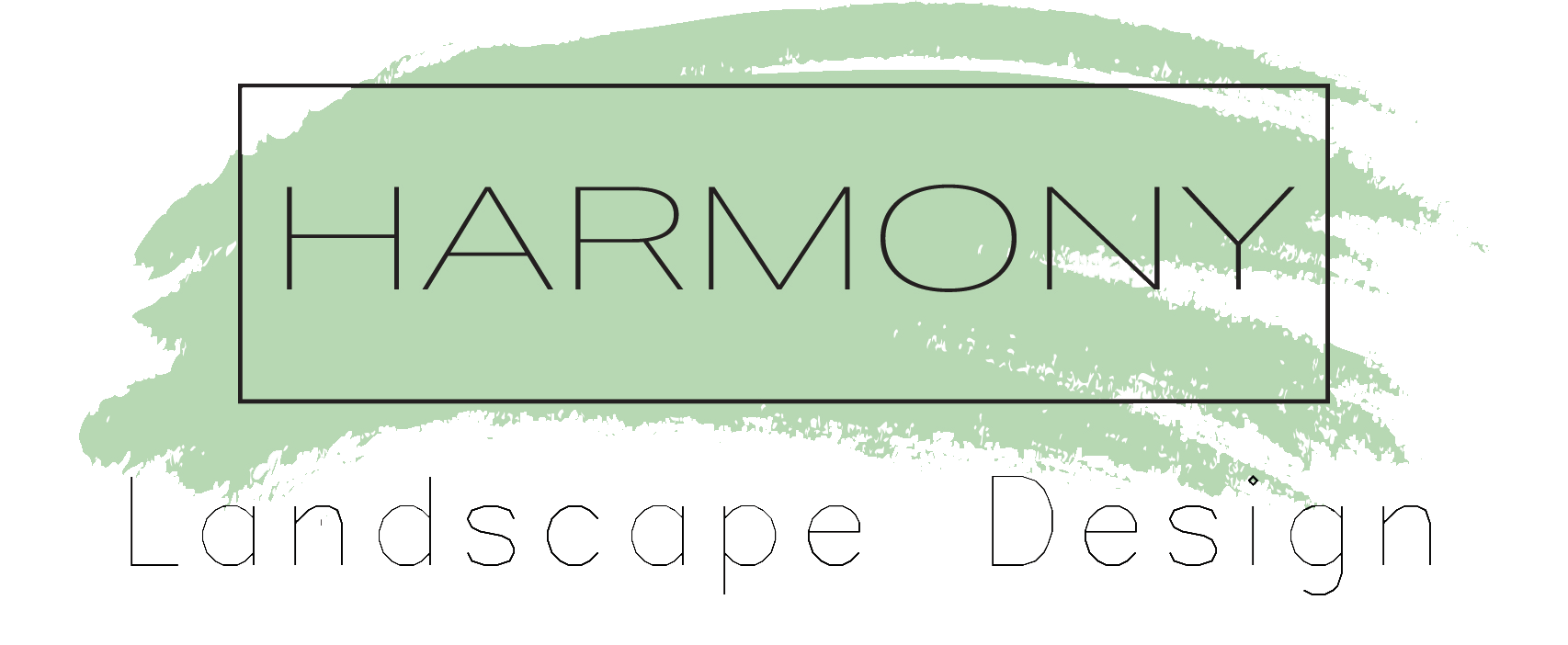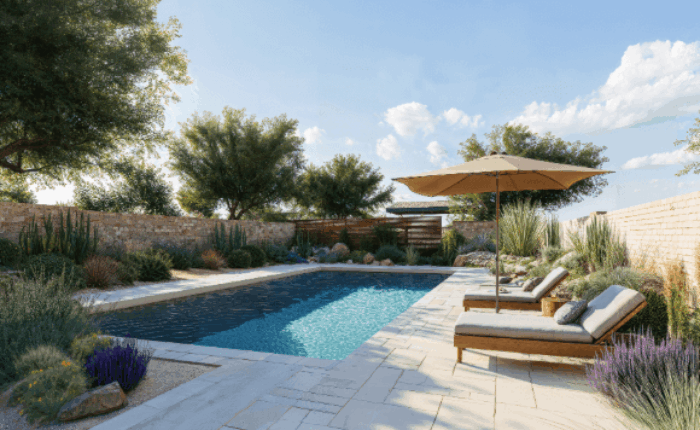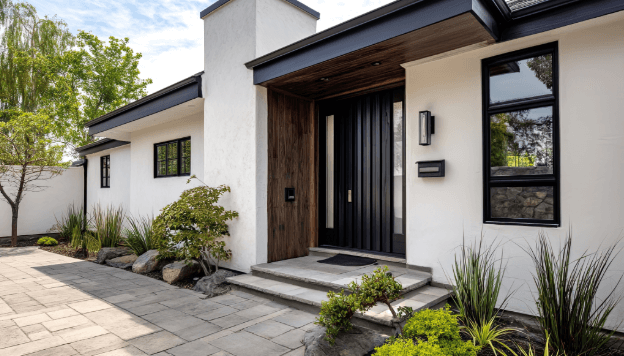Create a Modern Outdoor Space That Fits Your Style
Modern landscape design is more than a trend—it’s a way to transform outdoor spaces (especially your backyard) into functional, beautiful extensions of your home. From sleek patios and minimalist planting to sustainable native plants and dramatic water features, modern landscaping offers endless possibilities for every yard and climate.
Modern landscape design can also be tailored to the unique features and needs of your property, ensuring the style complements your property’s size, architecture, and natural environment.
Key Takeaways
- Modern landscaping balances form and function using clean lines, hardscaping elements, and layered planting.
- Choose landscape design styles that match your outdoor space and personal style.
- Embrace native plants and drought-resistant varieties for sustainability and low maintenance.
- Add water features, lighting, and focal points for visual interest and ambiance.
- Explore most popular landscape styles to find inspiration and practical solutions for your outdoor space.
- Design outdoor areas for entertaining, relaxing, or simply enjoying nature.
Principles of Modern Landscape Design
Clean Lines and Geometry
Modern landscaping favors straight lines, right angles, and clear, simple shapes. Paths, walls, and planting beds often use geometric patterns to create a sense of order and modernity. These clean lines unify hardscaping elements with planting design for a balanced look.
Hardscaping Elements
Hardscaping includes patios, walkways, retaining walls, built-in seating, and outdoor kitchens. Hardscaping features are essential in modern landscape design, helping to create clean lines and well-defined spaces that enhance both the aesthetic appeal and functionality of contemporary gardens. Modern designs often use concrete, gravel, stone, or steel to define space while maintaining a sleek, cohesive aesthetic. These elements add function and durability to outdoor spaces.
Native and Drought-Resistant Plants
Modern design embraces sustainability by selecting native species adapted to local environments. Choosing plants that are well-suited to the local environment ensures they thrive with minimal resources and maintenance. Drought-tolerant plants reduce water use, simplify maintenance, and support local ecosystems. This plant palette often includes structural shrubs, sculptural trees, and layered ground covers for year-round interest, and can be tailored to suit different climates for optimal results.
Water Features
Water features add movement, sound, and tranquility to outdoor spaces. Water elements such as ponds, streams, and decorative pools can be incorporated to create naturalistic and visually appealing landscapes. Modern designs use linear fountains, reflecting pools, or wall-mounted spouts with minimalist styling to complement clean lines and hardscaping.
Lighting and Visual Interest
Integrated lighting highlights paths, water features, and architectural elements. Uplighting trees or walls adds drama at night. Careful repetition of forms, limited color palettes, and textural contrasts ensure visual interest without clutter. Incorporating plants of varying heights and colors can also add visual interest, enhancing the overall appeal of the space.
Modern Landscape Design Styles for Outdoor Spaces
Minimalist Contemporary
Emphasizes monochrome color schemes, simple materials, and restrained planting. Sparse plant arrangements and clean lines create a calm, modern feel. In contrast, some landscape designs focus on an organic feel, using curved pathways, native plants, and rustic elements to evoke a more natural and relaxed atmosphere.
Japanese Gardens
Balanced, organic, and tranquil. Uses water basins, bamboo screens, raked gravel, and carefully pruned trees and shrubs to evoke a sense of harmony.
Formal Gardens
Symmetrical designs with clipped hedges, defined beds, and classical pathways. Flower beds in formal gardens are often arranged in geometric patterns, contributing to the structured and elegant appearance. Works well for traditional homes wanting a modern twist with minimalist plant choices.
English Gardens
Abundant, layered planting with meandering paths. Combines structured beds with naturalistic flower and shrub arrangements for a soft, inviting atmosphere. Flowers play a central role in English gardens, adding vibrant color, texture, and seasonal interest throughout the landscape.
An English garden photo often showcases the lush, structured look created by these diverse plantings and thoughtful design.
Modern Landscaping Ideas for Your Yard
From minimalist patios to vertical gardens, these modern landscaping ideas are designed to help you make the most of your outdoor space—no matter its size or layout. Each idea includes a suggested photo concept to help visualize the look and inspire your next project. These ideas offer inspiration to spark your creativity and help you envision unique possibilities for your yard.
You’ll find a variety of landscape designs, each with distinct features and styles to suit different needs. Professional designers can assist in turning these ideas into reality, offering personalized guidance and expertise.
1. Concrete and Gravel Patio with Clean Lines
This design uses large concrete pavers separated by gravel joints to create strong geometric lines that feel modern and clean. The gravel reduces water runoff and adds texture. Minimal native planting, such as grasses and succulents, softens the edges without cluttering the space.
It works equally well in a small courtyard or a large open yard, making it highly versatile and low maintenance. For added functionality and appeal, a swimming pool can be seamlessly incorporated into this modern patio design, enhancing the outdoor space for recreation and entertainment.
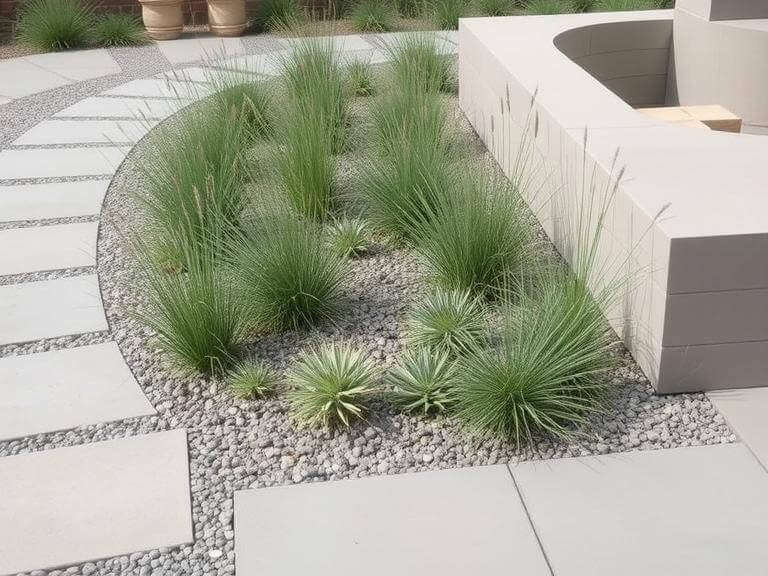
2. Minimalist Outdoor Kitchen
A streamlined outdoor kitchen area with stainless steel or concrete counters offers durability and modern appeal. Built-in grills, hidden storage, and sleek lighting keep the space clutter-free. Surrounding beds with drought-tolerant native plants maintain a green border while requiring little water or maintenance.
This design is ideal for homeowners who want to expand their entertaining space outdoors while keeping a modern, functional aesthetic.

3. Geometric Raised Planting Beds
Square or rectangular raised beds built from concrete, steel, or wood help structure the space and create a clean, contemporary look. Filling these with drought-tolerant native shrubs and succulents adds year-round greenery with minimal care. Decomposed granite or gravel paths between the beds keep the design tidy while adding permeability for rainwater.
This idea suits small urban yards or side yards needing clear, modern organization, and brings new life and vibrancy to the space.
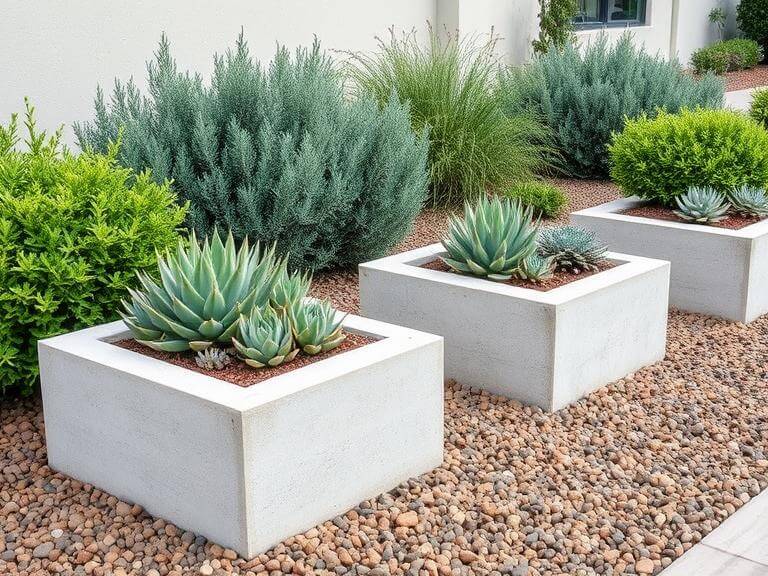
4. Desert Xeriscape for Arid Climates
Gravel mulch beds planted with cacti, succulents, and other arid-climate natives reduce water needs while providing striking textures and shapes. Clean-edged concrete or steel borders keep the look modern and crisp. Strategically placed large stones or boulders add focal points and anchor the design. Perfect for hot, dry climates seeking water savings without sacrificing visual interest.
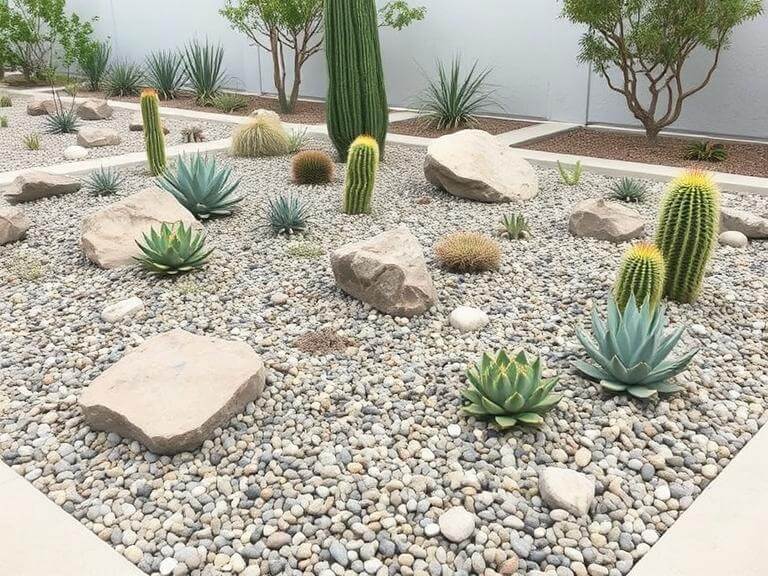
5. Japanese-Inspired Courtyard
A minimalist layout with raked gravel, bamboo fencing, and a few well-chosen trees or shrubs creates a calm, reflective space. A stone lantern or water basin adds cultural authenticity while enhancing the sense of tranquility. Careful pruning and clean lines keep the look uncluttered, making it ideal for small side yards or urban courtyards craving serenity.
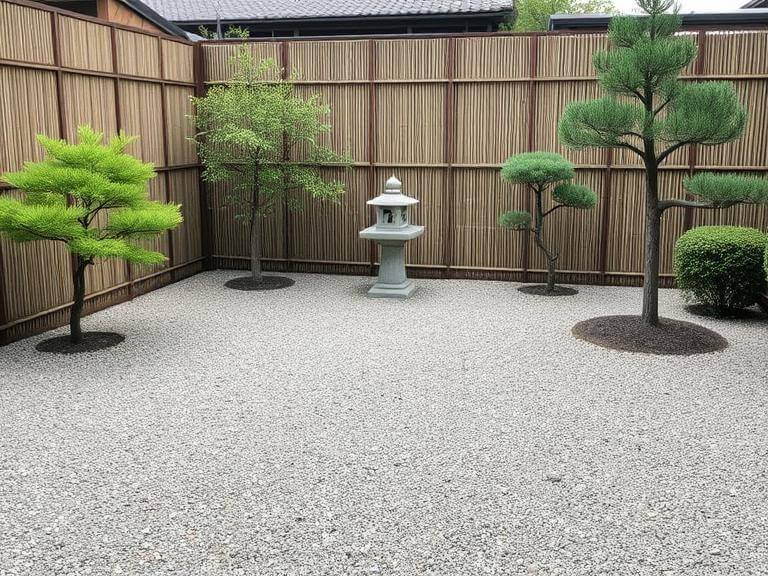
6. Modern Water Feature Focal Point
A long, narrow reflecting pool or wall-mounted fountain brings movement, sound, and elegance to the space. Clean-lined design ensures it feels contemporary rather than traditional. Paired with restrained planting and accent lighting, this water feature becomes the centerpiece of a modern patio or entryway. It’s a striking way to organize larger spaces or add luxury to compact courtyards.
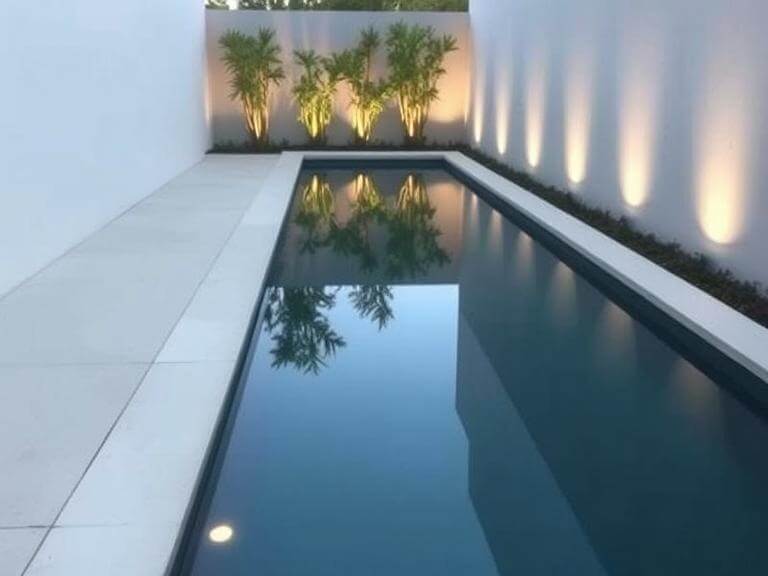
7. Native Plant Meadow Front Yard
Replace a traditional lawn with a layered planting of native grasses, wildflowers, and drought-tolerant perennials. This design supports local wildlife, saves water, and offers dynamic seasonal interest. By using native plants, you help strengthen the local ecosystem and promote regional biodiversity.
A simple gravel or stone path provides structure while letting the planting shine. Ideal for homeowners wanting sustainable curb appeal with a softer, more natural vibe.
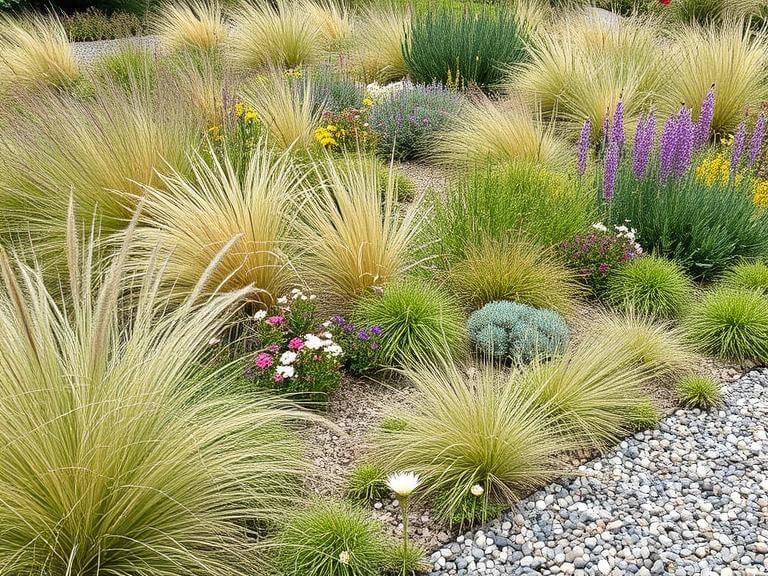
8. Urban Courtyard with Vertical Greenery
For small city lots or tight side yards, vertical planting walls maximize space and add lushness without encroaching on valuable square footage. Modular panels or custom trellises support ferns, vines, or even herbs.
Combined with modern pavers and built-in seating, the space becomes a private, green retreat in the middle of the city, creating a modern garden that blends style and function for contemporary outdoor living.
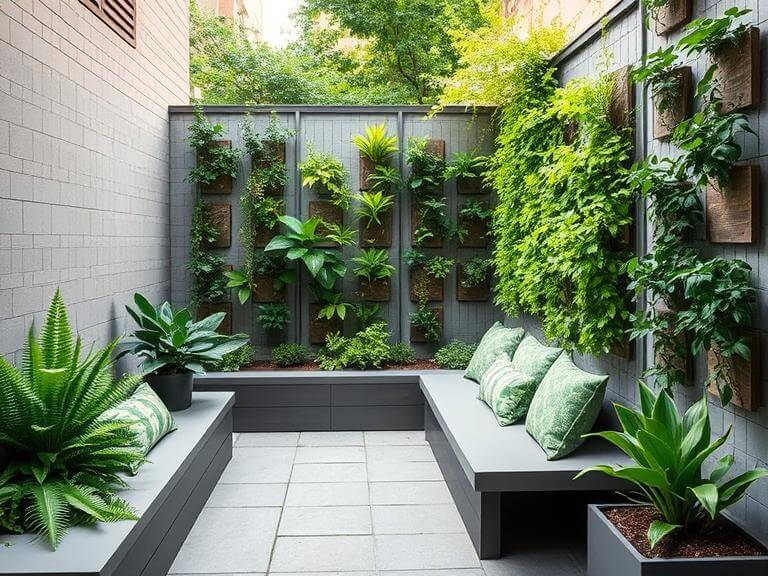
9. Outdoor Living Room with Fire Pit
A modern fire pit in concrete or steel becomes a functional focal point, extending the use of the yard into cooler evenings. Surrounding gravel or stone ground cover keeps maintenance low while reinforcing clean lines. Integrated seating in materials like concrete or wood ensures a cohesive, modern style that invites gathering without clutter.
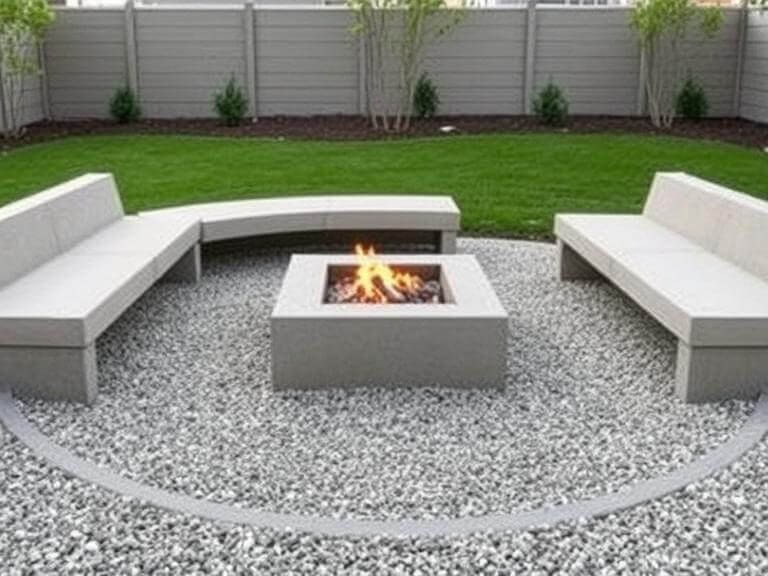
10. Formal Modern Entry Path
A straight, concrete or stone path flanked by clipped hedges or low grasses offers a polished, welcoming entrance. Subtle lighting along the edges improves safety while highlighting the design. This look enhances curb appeal with its structured, minimalist aesthetic, perfectly matching contemporary architecture.

11. Sustainable Rain Garden
A sunken planting area captures and filters rainwater, reducing runoff and providing irrigation for native plants that can handle periodic flooding. Steel edging or clean stone borders maintain a modern look. Carefully selected native species ensure the garden is both functional and visually appealing, demonstrating sustainability can also be stylish.
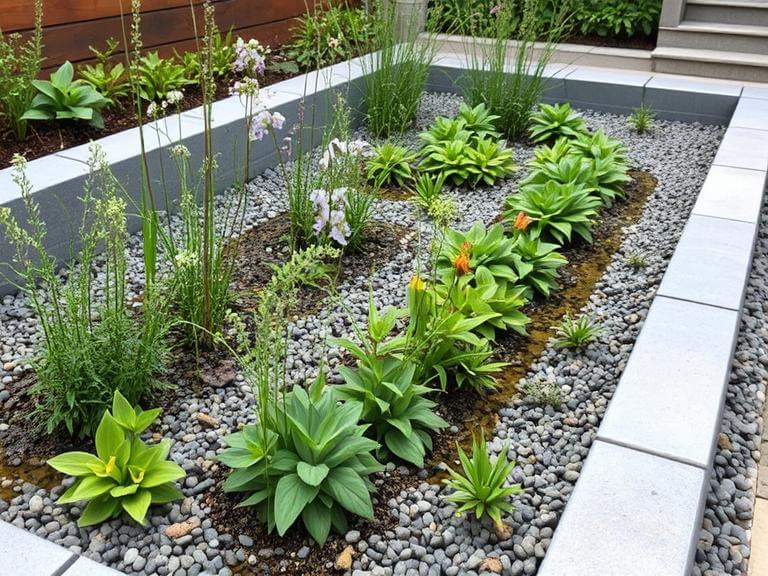
12. Modern Pergola with Shade Plants
An angular steel or wood pergola defines an outdoor room while providing partial shade. Pergolas are often used to provide shade, making outdoor seating areas more comfortable during sunny days. Beneath it, shade-loving ferns, dwarf trees, or ground covers create a lush underlayer.
This design brings architectural interest to the yard, encourages outdoor living even in hot climates, and seamlessly connects indoor and outdoor spaces.
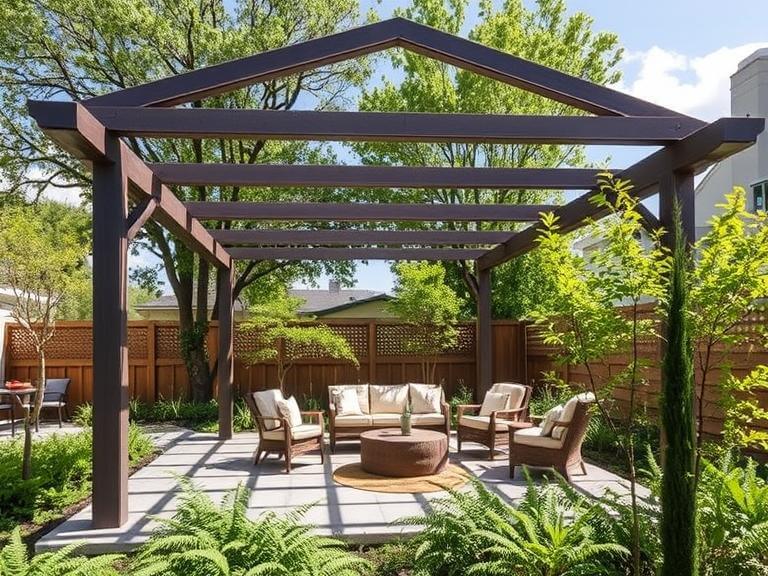
FAQs
What Is the Simple Definition of Landscaping?
Landscaping is the art and practice of planning, designing, and modifying outdoor spaces by integrating plants, hardscaping features, and other design elements. The goal is to enhance the beauty, functionality, and overall appeal of yards, gardens, and other outdoor areas, creating inviting and sustainable environments.
What Are the Categories of Landscape Design?
Landscape design generally falls into several key categories, each focusing on different aspects of outdoor space creation:
- Planting design: Selecting and arranging plants such as trees, shrubs, flowers, and ground covers to create aesthetic appeal and ecological balance.
- Hardscape design: Incorporating non-plant elements like patios, walkways, retaining walls, seating areas, and outdoor kitchens to define space and add functionality.
- Lighting design: Using outdoor lighting to highlight features, improve safety, and create ambiance during evening hours.
- Water features: Integrating ponds, fountains, streams, or pools to add movement, sound, and tranquility to the landscape.
- Sustainable and ecological design: Emphasizing native plants, water-efficient practices, and eco-friendly materials to minimize environmental impact and support local ecosystems.
What Is the Rule of 3 in Landscaping?
The rule of 3 is a design guideline used to create balanced and visually appealing compositions in landscaping. It suggests grouping plants, features, or design elements in odd numbers, especially threes, to achieve a natural, harmonious look. This technique helps avoid symmetry that can feel rigid and instead promotes a dynamic, organic arrangement that enhances visual interest and flow.
What Are the Different Types of Landscaping?
There are various landscaping styles that homeowners and designers can choose from, each with unique characteristics suited to different climates, aesthetics, and functional needs. Common types include:
- Modern: Characterized by clean lines, geometric shapes, minimalist planting, and the use of hardscaping materials like concrete and metal.
- Formal gardens: Symmetrical layouts with clipped hedges, geometric flower beds, and classical pathways, often evoking elegance and order.
- Japanese gardens: Balanced and tranquil designs featuring rocks, water elements, bamboo, and carefully pruned plants to create harmony and meditation spaces.
- English cottage gardens: Lush, informal plantings with meandering paths and abundant flowers for a romantic, natural feel.
- Xeriscape or desert landscaping: Focuses on drought-resistant plants like succulents and cacti, with gravel or stone ground covers, ideal for arid climates.
- Urban courtyards: Compact, functional spaces often featuring vertical gardens, pavers, and integrated seating to maximize limited outdoor areas.
- Tropical and lush planting: Emphasizes vibrant, large-leafed plants and dense foliage to evoke a lush, exotic atmosphere.
What Is a Realistic Budget for Landscaping?
Landscaping costs vary widely depending on the project’s size, complexity, materials, and features. For basic landscaping projects, homeowners can expect to pay approximately $5 to $20 per square foot. More custom designs with intricate hardscaping, water features, lighting, and premium materials typically range from $20 to $50 or more per square foot.
It’s important to factor in ongoing maintenance costs and to consult with professionals for accurate budgeting tailored to your specific goals and property.
Conclusion and Free Consultation
Modern landscape design transforms your yard into a functional, stylish extension of your home. Whether you dream of a sleek minimalist patio, a lush native meadow, or an inviting outdoor kitchen and fire pit, there’s a modern landscape style for every taste and budget.
Ready to design your perfect outdoor space? Contact us today for a free consultation. Let’s create a modern, sustainable landscape that suits your lifestyle and enhances your home.
